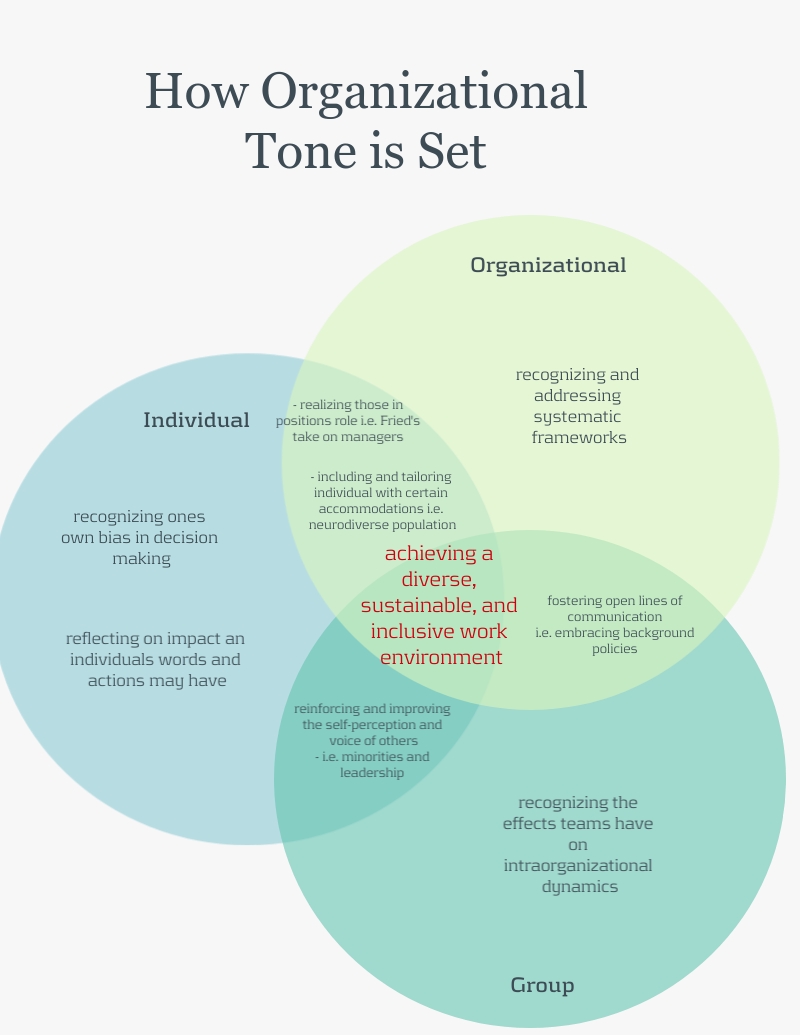1. The most engaging approach I found this week came from Jason Freid. Throughout his presentation he gave a very logistical and linear narration on why work doesn’t (always) happen at work. He begins with a line of credibility addressing an ongoing and relatable question he’s been asking everyday people for ten years. Prompting those in the audience to speculate where they go to ‘get work done,’ Fried draws out that they seldom say the office. He gives support to why this is never the case listing reasons whilst drawing comparisons and adding a bit of comical charm to his argument. The examples he gives, such as comparing sleep with work, helps explain how the two processes are interrelated and that in order to achieve its fullest potential, they require uninterrupted. Managers and meetings, or “M&M’s” as he jokingly calls it, are directly apart of the issue. These anecdotal scenarios go further serving as statistical tradeoffs when he makes the point that a manager’s meeting with ten employers doesn’t consume an hour of time, but rather ten hours of productivity. What I found interesting was his ability to reason or look at things in an alternative way. Explicit about being manager himself, Fried furthers his connection with the audience making them feel as if he is on ‘their’ side. He offers a point of reason appealing to listeners who may not have looked at it that way in the past. Finally, he rounds out his argument debunking beliefs of those opposed to alternatives at the office by adding recommendations from whats worked based on his own and many other company experiences
3. For this discussion I wanted to continue elaborating on Jason Fried’s argument. For starters its necessary to understand Fried’s perspective which is based around developing and reframing the nature of work with practical tools and collaborative platforms. As an entrepreneur he continuously looks for growth thus requiring him to be relatable across broad audiences. He has co-authored publications and found companies that focused on productivity. Knowing this we’re able to relate his background with the larger body of knowledge around organizational culture. From our class readings we’ve begun to understand how diversity and inclusion policies can influence the perception of its employees especially with minority groups. Similar discussions included embracing those less well known such as neurodiverse and disabled populations. Rethinking the levels of systems Kaplan and Donovan describe coincides with the theme Fried is trying to address in his TedTalk. Where I see Fried’s message fit is in between the category of an organizational and individual level. His approach to reworking the systematic organizations we have today, such as those in greater leadership positions (i.e. managers), is key to fostering an environment that has better lines of communication and productivity amongst its employees. By reducing distractions taken from trivial matters (i.e. meetings), Fried is empowering individuals to have more time to focus on themselves which in turn can have positive effects on the overall pool of sustaining diversity. The point I want to make is that his talk reinforces the idea that ones actions have running impacts and feedback loops to many issues at large.


Hi Bryan, it seems you were very moved by Fried’s article and I am glad you took the time to dive further into it. I like how you used the Venn digram to compare the different types of work environments and the amount of people needed to get work done. I also liked how you set up his argument and provided examples of how he proved it to the audience. You also provided a deep backdrop of Jason Fried’s work and showed how his experience and other works make him equipped to defend this argument.
I definitely agree with you when you say Fried makes the audience feel like he associates with them on their side. It’s like he understands the struggle what not getting any work done feels like, and he uses this to his advantage. I think it is also very ironic how most productivity happens in any place other than the office, as Jason explained. I like how in your Venn Diagram, you bolded / colored “achieving a diverse, sustainable, and inclusive work environment” to highlight what they all shared in common. I think this was a really smart way to tie in what we learned from the TED talks and compare it to the readings we’ve done so far in class.
Nice work, Bryan–I appreciate the connections you’re drawing in here, which help us to see the landscape of this conversation as you do.